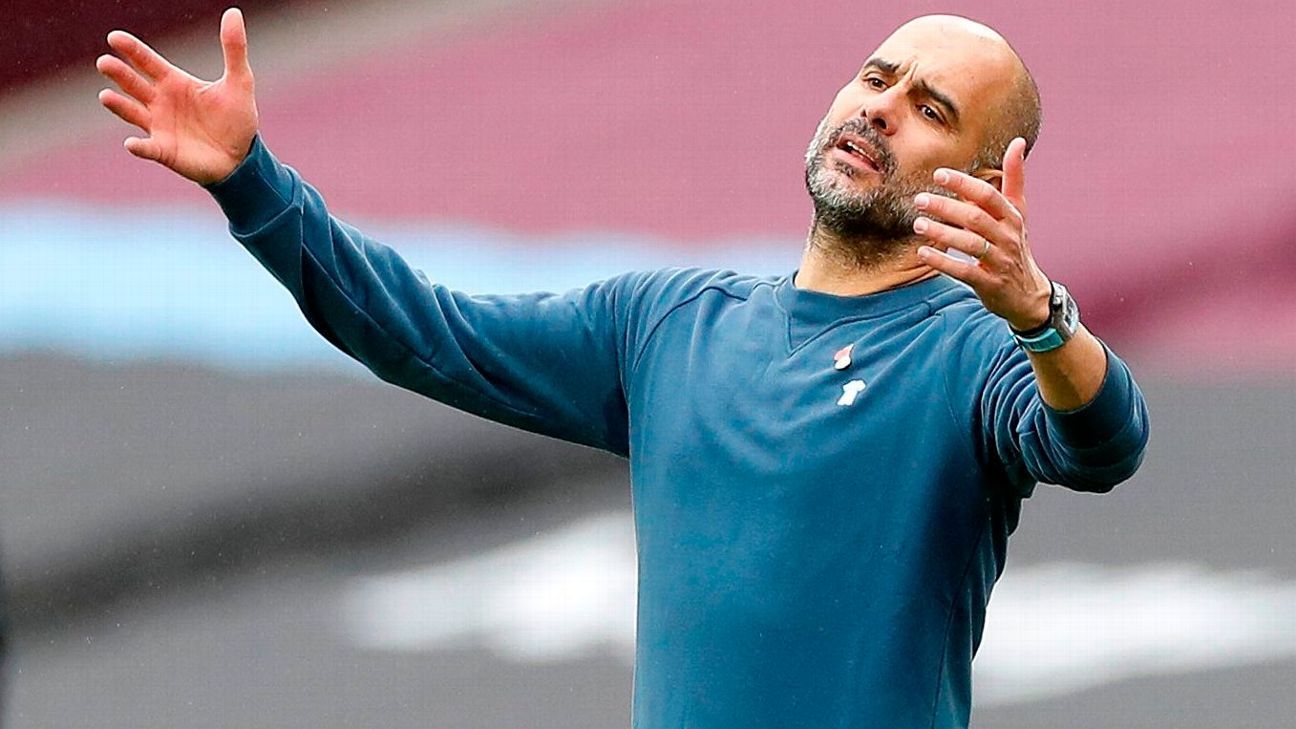Products You May Like
As he attempts to find a reason for Manchester City‘s worst start to a season since he arrived as manager in 2016, it would be easy to suggest that Pep Guardiola has lost his touch at the Etihad. After all, City’s malaise has not simply appeared as a bolt from the blue in recent weeks.
Saturday’s unconvincing 1-1 draw at West Ham United, during which Sergio Aguero limped off with a hamstring injury, was the third time in five games that City had dropped points and they have now recorded their worst start since 2014.
City failed to mount any kind of challenge to Liverpool in the Premier League last season and their Champions League campaign came to shuddering halt against unfancied Lyon in the quarterfinals. Is their poor form becoming a trend?
It is fair to say that City and Guardiola have lost the air of invincibility they developed under the former Barcelona and Bayern Munich coach in winning back-to-back titles, and a domestic treble, in 2017-18 and 2018-19, but only so much of the blame can be laid at Guardiola’s door.
City’s problems have developed over time and are rooted in their player recruitment over the past three years. In many ways, they are making the same mistakes as Manchester United during Sir Alex Ferguson’s final years as manager. City are signing players who are not as good as those they are supposed to replace, and when that happens, the damaging effects can take time to show their full impact.
At United, the gradual downgrading of the squad only began to bite after Ferguson retired in 2013, leaving a trail of successors with the impossible task of maintaining the club’s success with inferior players. It started with the sale of Cristiano Ronaldo to Real Madrid for a world record £80m in 2009. Ronaldo was replaced by Antonio Valencia, a £16m signing from Wigan, with Michael Owen also signed on a free transfer from Newcastle.
Then came the likes of Chris Smalling and Phil Jones, identified as long-term replacements for Rio Ferdinand and Nemanja Vidic, and other low budget signings such as Bebe, Gabriel Obertan and Alex Buttner.
Ferguson said that United were finding “value in the market,” while City were spending big on the likes of Carlos Tevez, Yaya Toure, David Silva, James Milner and Aguero.
By the time United beat City to the signing of Robin van Persie from Arsenal in 2012, it was enough to win back the title that season, but the damage had already been done. Too many greats had been replaced by less able players and United are still paying the price, almost a decade later.
City are not at that stage yet, but the alarm bells should be ringing at the Etihad because the club has lost its touch in the transfer market. Their critics will argue that they have outspent all of their rivals under Guardiola, who has, according to Transfermarkt.com, spent £832.4 million on new players since succeeding Manuel Pellegrini as manager in July 2016. But that does not automatically translate to value on the pitch — United in the post-Ferguson era are a prime example of that — and while they have spent big amounts, their record signing is surprisingly low compared to other top European clubs; £64.3m spent on Benfica defender Ruben Dias this summer.
United, Liverpool, Arsenal and Chelsea have all signed players with bigger price tags than City, although City have signed seven players who cost more than £50m since Guardiola took charge, so they have consistently stocked their squad with expensive signings.
Aside from the odd exception, such as the £32.5m British record signing of Robinho in 2008 or the £35m capture of Aguero in 2011, City have always spent at the high end of the market, but never quite at the very top of it. But while they have invested heavily, it is now a long time since they have truly improved their squad with a new signing.
Aymeric Laporte has been a huge success since arriving from Athletic Bilbao for £58.5m in January 2018, but he is a rarity. Vincent Kompany has yet to be properly replaced — Dias and Nathan Ake have been signed for a combined total of just over £100m to do that this summer — while there are still no obvious successors to Yaya Toure or David Silva.
City have sensibly attempted to replace Fernandinho before he leaves, but despite spending £56.4m on Rodri in 2019, Fernandinho remains their best defensive midfielder at the age of 35.
Aguero, whose contract expires next summer, is City’s best striker by some distance; Gabriel Jesus is not in the same bracket. Guardiola’s attacking options do not go much further than the young Brazilian.
And while City are excited by the potential of Ferran Torres, a £20m summer signing from Valencia, it is hard to see him being an upgrade on Leroy Sane, who was sold to Bayern Munich earlier this year.
Aside from Laporte, the recent transfer windows have been a tale of high spending and low return for City and it is why they have fallen back into the pack. Other expensive signings, such as Riyah Mahrez (£61m), Joao Cancelo (£27.6m) and Benjamin Mendy (£51m) have left City fans underwhelmed.
Guardiola clearly is at fault for much of the slump, but when you lose big players and replace them with inferior ones, there is only one way that a team is going to go.
